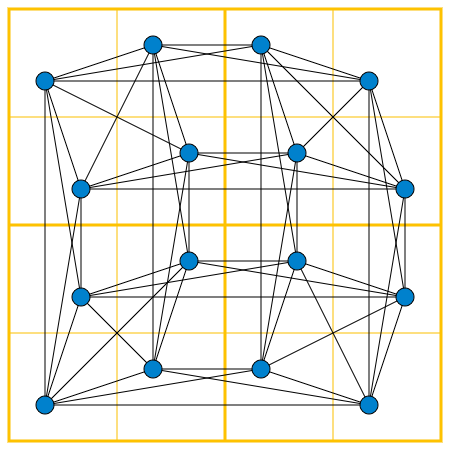This Week in Neo4j – Discovering the Soul of a Product, UK Singles Chart Graph, Building Real-Time UIs with Kafka and Vue.js

Developer Relations Engineer
3 min read

Hi graph gang,
In this week’s video from the NODES 2019 conference, Pat Brown and Karim Shehadeh explain how they used Neo4j to discover the soul of a product at Under Armour.
Nathan Smith finds the optimal solution for Sudoku, Luanne Misquitta teaches us all about Post-Union processing, and Adam Cowley builds a real-time UI using Kafka and Vue.js.
And finally, I created a QuickGraph of the UK Official Singles Chart.
Enjoy!
Mark Needham, Karin Wolok, and the Developer Relations team
Featured Community Member: Oscar Arcia
This week’s featured Neo4j Community member is Oscar Arcia, Cloud Engineer at Laboratorio Internacional Web.

Michael Porter – This Week’s Featured Community Member
He is using Neo4j in production on two mobile applications (both available in the app store):
Oscar came to us after the Neo4j Graph Tour in Mexico City in November. Already being very active in the community, Oscar and a couple of his friends / colleagues were interested in bringing graphs into their local technology community. They reached out to us Mexico City and requested our support.
Of course we said yes and Oscar, Pablo José, Daniel Murillo, and Emeralda Montsserrat are now running a brand graph database meetup group in CMDX!
Thank you for being so active in your local tech community. Your passions really show and we’re so happy to be part of your creations!
Discovering the Soul of a Product With Neo4j
In this week’s video from the NODES 2019, Pat Brown and Karim Shehadeh explain how they used Neo4j to discover the soul of a product.
In the talk they explain how they build an X-Ray Graph that sits on top of various data sources and makes it easy to search across the product catalogue. They also show some parts of the GRANDstack application that was built on top of the graph.
Solving Sudoku with Neo4j

Following on from last week’s blog post where he coloured a Sudoku Graph using the K-1 Coloring algorithm, this week Nathan Smith shows how to build an algorithm for Sudoku that finds the optimum solution.
Nathan shows how to model Sudoku as an exact cover problem using Neo4j, and then explains how to use Donald Knuth’s Algorithm X to solve it. The code is all available in a Jupyter notebook.
Real-time UI using Kafka and Vue.js, Flask Login, Inference in Graph Databases

- Adam Cowley starts the new year with a blog post in which he builds a real-time UI on top of Neo4j with Vue.js and Kafka
- Taiwo O. Adetiloye shows how to integrate Flask Login with Neo4j and creates a simple dashboard to log into.
- Martin Preusse released graphio, a Python library to quickly build data sets and load them into Neo4j.
- If you prefer your TWIN4j content in audio format, Rik released episode 3 of Graphistania 2.0. They discuss content from December’s TWIN4j posts, including managing VMware infrastructure, visualising breast cancer data, and analysing customer journeys.
- Atakan Güney explains what inference is on the Semantic Web and shows how it can be applied in Neo4j.
Post-Union Processing Explained

Luanne Misquitta has written a blog post about an eagerly awaited feature – post union processing.
Luanne describes the problem that this feature solves, shows some examples of how to use, and concludes by listing some gotchas to keep in mind.
QuickGraph: UK Official Singles Chart 2019

In my latest QuickGraph post I showed how to create a graph of the UK Official Singles Chart using data from officialcharts.com and the Spotify API.
After importing the data using APOC’s Load JSON procedure, we explore the top charting artists, the number 1 songs of 2019, as well as the biggest climbing songs from week to week.
Tweet of the Week
My favourite tweet this week was by Michael McKenzie:
Learning about @neo4j 4.0 …
What’s better than 1 db running?
2 dbs running…
What’s better than 2 dbs running?
MORE dbs running….@mdfrenchman @JMcCrumb pic.twitter.com/S9lHS63vys— Michael McKenzie (@mckenzma) January 13, 2020








